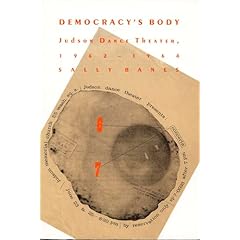I've probably talked about this format before but each time I perform it, I'm invigorated by it's potential. For the newbies, All In is an improv format that I invented where I at first appear to be doing a one man show except during the intro I explain that I will be performing with each member of the audience by bringing them up on stage with me. I explain the importance of support while in the audience and how this will make your life better when you have to be up here with me, too. Everyone must play. This is a very important rule. I also explain that improv is about apparent risk. It appears as though the improviser is walking across some dangerous tightrope that could toss him into an abyss of disfavor with the audience but that's not really the case. (I'm not sure of the validity of this statement, but it is important to set the audience at ease before they go up on stage.)
Here is a bulleted list of what's good about this format:
- It actually means less work for me in a one man show format.
- It allows people the chance to come out of a shell and surprise themselves with things they didn't know they had.
- It creates an even larger level of sympathy from the audience. They sympathize with the audience member on stage because they know better what it is like to up there, and when the audience member is being difficult for me, they sympthize with me having to deal with a challenge. Either way, the audience is on my side.
- Because each scene or game is only around 2-5 minutes if something is not going well, it is soon gone and something completely new starts with a fresh audience member.
- It might get someone hooked on improv by realizing that they can actually do it. As you know, anyone can do this. It's simply a matter of unlocking part of your brain. Any human can improvise.
- It is the TRUE meaning of the words "audience interaction."
- The audience is, in a small way, put through a traumatic event together. Psychologically, this bonds people. People like to be connected to other people so this format creates kind of a bonded group for an hour or so, and my hope is that as they're leaving they have discovered something about themselves and something about total strangers who they would otherwise never look at twice.
- I have the option to bring up single people who on my first read can handle being up there with just me or I can bring up multiple people if time is running short or if they appear to need some extra support from people near them in the audience.
- There is a certain pedagogical aspect to the format that sneaks its way. Everyone is learning how to better improvise and to communicate better with strangers.
- It makes them appreciate improv more. Once they get up there under the hot lights and experience the judgement an audience can put on you, they're hopefully more willing to enjoy and support improv in the future. People who have waited tables leave better tips. They've been there.
Things that are bad about this format:
- It is forced interaction. An audience member is showing up to watch and enjoy a show. If they wanted to participate, they would have taken a workshop, right? I'm not a fan of coersion or even persuasion. I don't like to tell people what to do. This is my biggest hangup for this format but in order for it to work, some persuasion is needed.
- For some, it shows them how easy improv can be. I don't want everyone thinking that improv is super easy, improvisers would lose all our credibility. It wouldn't be seen as a skill, which is unfortunately where it is in most cases anyway. As a practitioner of the art form, I need to maintain a small amount of mystery and status, lest we all be improvisers and end up with no audience.
- It only works with a small audience. I need around 3 minutes per audience member on average to make this show happen so depending on how long I have, larger audiences are going to be difficult to squueze in completely. This show, no matter how successful, could not be played at Carnegie. Unless some kind of random seat selector pulled up random audience members, but that's kind of a different show altogether. Or even more different, a random seat catapult that would launch them toward the stage.
Even though it is flawed, so is anything, and I think the good points outweigh the negative ones. I like this format a lot.

41 year old virgin and day trader awkwardly tries to pick up Meredith, a lady who works in the Loop, as they ride on the El in Chicago. Meredith had never improvised before but was very good at it nonetheless.

Jennifer, a practiced Shakespearean actor broke the ice with the first scene of the night, a classic Shakespearean wooing scene. She had never improvised in front of an audience but had much success, even in the language jungle that is improvised Shakesp.
Give people room to succeed with the illusion of support and risk and they will almost always surprise themselves and the audience.
i need to write about improv more.
b
thanks to kbadr for a great gaggle of pictures from Friday night.

